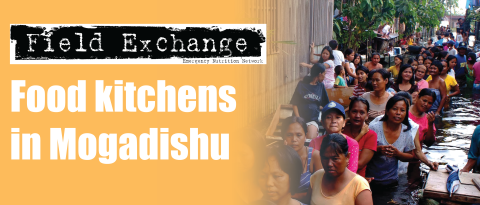Fortified spreads v CSB in supplementary feeding in Malawi

A child eating fortified spread made using skimmed milk
Summary of published research1
A study conducted in rural Malawi has compared the recovery rates of moderately wasted children fed fortified spreads to those fed corn soy blend (CSB). Fortified spreads are energy-dense, lipid-based pastes with added powdered micronutrients.
The study was a randomised clinical effectiveness trial where recovery rates were compared among children with moderate wasting who received either milk/peanut- fortified spread, soy/peanut fortified spread or CSB. The children were aged 6-60 months and were selected from 12 sites between July 2007 and February 2008, having undergone eligibility screening. Children were randomly allocated to one of the three diets and received iso-energetic quantities of food, 314 kj (75kcal) per kg per day for up to 8 weeks, with biweekly follow up. The primary outcome was recovery, defined as having a weight-for-height z score (WHZ) > -2. Time-event analysis was used to compare the recovery rate. A total of 1462 children were enrolled in the study.
Children receiving soy/peanut fortified spread had a similar recovery rate to those receiving milk/peanut fortified spread. Children in either of the fortified spread groups were more likely to recover than those receiving CSB (80% in both fortified spread groups versus 72% in the CSB group, P <0.01). The rate of weight gain in the first two weeks was greater among children receiving milk/peanut fortified spread (2.6 g/kg/day, n=465) or children receiving soy/peanut fortified spread (2.4 g/kg/day, n=450) than among children receiving CSB (2.0 g/kg/day, n=447), P = < 0.05). Rates of length gain did not differ between the three groups. Eight per cent of children in each feeding group developed oedema, indicative of severe malnutrition, while receiving supplemental feeding. Only 4.3% of children were lost to follow up.

A case of oedematous malnutrition admitted to the programme
The authors speculate that better outcomes with the fortified spreads may relate to less sharing with other family members as it was unfamiliar, and their greater energy density so that malnourished children have to consume smaller volumes. The 72% recovery rate among children receiving CSB was higher than expected and it was postulated that this may be due to mothers' increased compliance and vigilance, prompted by the health professionals delivering the care. The data also suggest that the inclusion of milk in supplementary foods for wasted children does not result in better linear growth.
The authors concluded that fortified spreads are superior supplementary foods to CSB for moderately wasted Malawian children. However, the major limitation is their high costs. At the time of the study, locally manufactured soy/peanut fortified spread cost half that of milk/peanut spread and twice that of CSB. At the same time, children treated with CSB required 20% more food, lessening the difference in costs of the foodstuffs.
One limitation of the trial was that it was conducted in agrarian, rural Malawi where corn is the staple food. Results may therefore differ in urban settings or in non-African populations. Further research is needed to determine whether soy/peanut fortified spreads are effective in other settings and operational contexts.
1Matilsky. D (2009). Supplementary feeding with fortified spreads results in higher recovery rates than with a corn/soy blend in moderately wasted children. Journal of Nutrition, volume 139, pp 773-778, February 2009
Imported from FEX website


